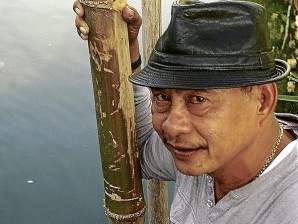Dagupan’s ‘Bangus King’ leads way for others
DAGUPAN CITY—If there is someone who deserves to be called “Bangus King” here, it is Eduardo Maramba, who belongs to four generations of milkfish growers.
“My great grandfather, Franciso, my grandfather, Cipriano, and my father, Rufino, were all engaged in bangus culture, but it is only during my time when the industry blossomed into its present state,” says Maramba, 58, who owns 8 hectares of fishpond in this city, 5 ha in Alaminos City and 12 fish cages also in Alaminos.
Maramba, who is accredited by the Bureau of Fisheries and Aquatic Resources’ Ilocos office as a fish grower, saw how the industry grew. He started helping his father tend the family’s fishpond when he was 12 years old.
“We culture only few bangus then, only a fish in every square meter. The fish were also given solely lablab (algae) so they grew faster. From fingerlings, it took only 45 to 60 days to grow bangus to 300 grams each,” he says.
Now it takes 120 to 150 days to grow bangus to reach the same size.
Article continues after this advertisement“Our bangus still feed on lablab until they are two months old. In the third month, commercial feed is added to their diet. In the fourth month, it’s only commercial feed for them,” he says.
Article continues after this advertisementIn Alaminos, his fishponds are used as nurseries. The fish are later transferred to cages which serve as grow-out areas.
He depends on the weather, practicing the “cold-rainy” season system of stocking fish.
“When it is cold, I stock only 25,000 to 30,000 fish in a 1,000-meter cage. This is because bangus hardly eat when it’s cold and their growth is stunted. During rainy months, I stock up to 60,000 fish in each cage,” he says.
The bangus industry has grown so big that the local supply of fry could not meet demand. Industry players, he says, have to get fry from Sarangani and Indonesia.
While Maramba has been in fish farming for more than
40 years, it was only recently that he found bangus in different colors—three black and a blue one—in his ponds.
He first saw the black bangus, now about four months old, when it was only at least two weeks old.
“They are so black, from head to tail, that one reporter said we should call them ‘Obama bangus,’” he says, referring to the United States’ first African-American president, Barack Obama.
Maramba says Mayor Benjamin Lim has asked him to lend the city government a black bangus when the city celebrates its annual Bangus Festival in May. Yolanda Sotelo, Inquirer Northern Luzon
